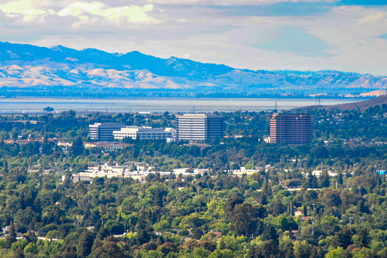By Attorney Eric R. Welsh
President Trump began his long-promised attack on immigration this week, signing two aggressive and wide-ranging executive orders. In one, Trump focused on the southern border, ordering the Secretary of Homeland Security to use Federal funds to start construction of a wall along the U.S.-Mexico border while waiting for Congress to allocate taxpayer money to cover the rest of the multi-billion dollar price tag. Trump also ordered the construction of additional detention facilities along the border, and the assignment of asylum officers and judges to those facilities. He ordered the agencies to arrest, detain, and remove anyone entering illegally at the southern border, to the maximum extent permitted by law.
In the other order, Trump turned his aim to undocumented aliens in the United States. In a long series of commands, Trump drastically recalibrated the immigration agencies to focus their priorities on deportation and removal. Trump discarded the “priority enforcement” policies that guided the Department of Homeland Security (DHS) during the Obama presidency, vastly expanding the class of noncitizens that will be considered “priorities” for removal or deportation. Before Trump’s executive order, DHS policy instructed the agents enforcing the law to exercise discretion prudently, focusing resources on enforcement priorities. Generally speaking, “priority enforcement” was limited to criminal aliens with felony convictions or convictions for other serious crimes, terrorists, gang members, and very recent entries without inspection.
Now, under the new Trump executive order, enforcement priorities will include undocumented aliens with virtually any criminal record (including arrests that don’t result in a charge or conviction), any prior removal or deportation order, any prior immigration misrepresentation, and any other person who may have committed acts that constitute a possible crime or “otherwise pose a risk” in the discretion of an immigration officer. These vague, broad standards essentially “prioritize” any alien without status in the U.S.
Trump also ordered actions that would significantly increase interactions between the federal immigration agencies and state and local law enforcement, laying the groundwork for a vast deportation task force. He authorized local police to act as immigration agents, with authority to arrest and detain a person for lacking status. He reanimated heavily criticized Bush-era policies for detaining deportable aliens arrested by local law enforcement. Trump then brazenly set out plans to take on so-called “sanctuary cities” that currently refuse to use their resources and personnel to assist in deporting people for minor crimes (or arrests that don’t result in a charge). Trump threatened to withhold unspecified federal funds from sanctuary cities, and gave broad discretion to his agents to decide what constitutes a “sanctuary city.”
Other provisions in the orders set forth an unambiguous hard-liner policy on deportation and removal. Trump ordered the expansion of the agencies tasked with policing and prosecuting the immigration laws by hiring 10,000 additional Immigration & Customs Enforcement (ICE) officers and 5,000 additional Customs and Border Patrol (CBP) officers. He ordered the expanded use of “expedited removal,” a process whereby DHS agents can order certain aliens to be removed without any hearing. He ordered the agencies, to the maximum extent permitted by law, to apprehend and detain removable aliens.
Much of the executive orders still require additional policy guidance from the Secretary of DHS and the Attorney General to implement, and we should expect to see guidance in the form of agency memoranda and proposed regulations in the coming days and weeks. We should also expect to see a number of legal challenges to the constitutionality of these orders and the policies that implement the orders. It remains to be seen how the agents on the ground will respond to the new orders, and how the states and localities will respond to the commandeering of manpower and resources. Many sanctuary cities have already pledged to oppose the new orders, and are ready to forfeit federal funds in the interest of protecting vulnerable populations.
The Trump executive orders are harsh and draconian. Still, the orders do not (and cannot) strip protections that exist under federal statutes and the U.S. Constitution. The individual rights enshrined in the Constitution apply to every person in the U.S., regardless of immigration status. Those include the right of due process under the law, to remain silent, to ask for an attorney, and to be free from warrantless searches. Immigrants who are arrested and detained are still able to seek bond if eligible, and to seek relief from removal with representation by an attorney.
Immigration practice in the United States is changing rapidly under President Trump. Any person who believes they may be affected by these changes or other rumored changes should consult with an experienced immigration attorney to sift through the rumors and find an answer.




